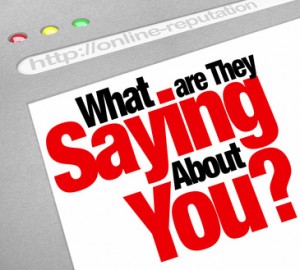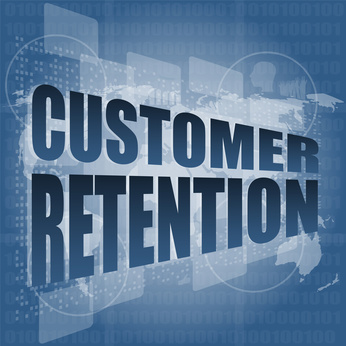
Taking the High Road: How to Filter Through Your Feedback
Knowing how to respond to negative feedback from a customer, whether it comes in the form of online reviews, comments, emails etc, isn’t always easy to handle. If you’re dealing with negative feedback, you can start to feel the pressure pressing down on you to take action immediately.
I recently had a client who received a negative and off topic review on Google. With over 50 five star reviews, the single 1 star review is the one that sticks out and draws focus. It is not my own business, but when you invest so much time and energy with clients something like this feels personal. This particular comment was cowardly and what I would call a “hit and run” as there is very little recourse and the person never even went to the store or purchased a product. Before I regress too far though, the important thing to do as a marketing consultant is to not let your emotions get the best of you and focus on the image of the brand and choosing and developing an appropriate plan of action.
In those types of situations, it can be difficult to know how to handle it and what to do to manage the blowback from your customers, and turn a negative circumstance into a positive.
Here are 6 Ways You Can Make the Best of Negative Feedback:
Own Up and Take Action
If you’re given negative feedback by a customer, listen to what they’re saying and make an effort to understand their point of view. They clearly feel they have been wronged in some way and it’s up to you to correct the situation.
Remember, it’s not your place to tell your customers that they’re wrong. It’s your job to address the situation as best as possible to create a positive outcome. Taking the high road may be difficult, but it’s worth it in the end.
Take steps to acknowledge the customer and their complaint personally by getting into direct contact with them if necessary. Many times you’ll be able to better understand exactly what the problem is and how they’d like you to handle the situation. You should also keep the customer in the loop as you work on solving the problem. By keeping them updated on your progress throughout the situation, they’ll know that you’re making their concerns a priority.
If you handle negative feedback professionally and efficiently, you’ll minimize the severity of the situation and hopefully create a positive ending association in your customer’s mind.
Clarify Goals and Expectations
Use negative customer feedback as a form of constructive criticism. Use this to your advantage to determine what and how the process went wrong. Armed with that information going forward, you can correct the problem and put procedures in place to prevent it from occurring again.
By addressing customer concerns and complaints, you can figure out what part of your system is faltering, where you need to devote extra attention, and how to reply to customers in the future. Take customer criticism as an opportunity to redefine your business relationship outcomes and expectations. Maybe you find that your intended goals are too lofty and need readjustment, or that you need to clarify the specifics of how you will achieve your goals so everyone (employees, customers, and yourself) are all on the same page.
Take the initiative to actually talk to your customer and find out where they feel your service fell short of their expectations. It could have been a simple mistake or oversight, but it could also be a more complex issue that they bring to your attention. In that case, be grateful that they’ve made you aware it so you can address it quickly before it affects any other customers or areas of your small business.
Reflection and Showing Your Value
Problems will always occur at some time in business so we can learn to better ourselves, our services, and our processes. If you view criticism in a wholly negative light, you’ll become incapable of growth and progress. But, if you view criticism and feedback as an opportunity for learning and growth, you’ll be well on your way to becoming the best version of yourself so you can do your job more efficiently.
Take a moment to step back and analyze the situation as objectively as possible. What could you have done differently? Is this a recurring pattern or is it new?
Stepping up to address a customer’s negative feedback shows your maturity and capability for responsibility that will be recognized by the customer and others in your business. The ways in which you expertly handle customer criticism will make you invaluable in your small business and a go-to resource for strengthening customer relations in the future.
Strengthen Your Relationships
Turn a potentially negative situation into a positive one for your customer and give them something to remember about how your small business conducts itself when problems do occur.
You should be looking for every opportunity to build solid relationships with your customers, even in the form of customer complaints and dissatisfaction. However, this may be the best opportunity to build a good rapport and positive relationship. Take this opportunity to show your character and learn more about your customer and their individual needs from your small business.
Hard times can often end up bringing people close together. Disagreement or conflict forces people to communicate with each other and work together if a solution is to be reached. Simply from coming into contact repeatedly with another person, if you’re both focused on finding a solution, will inadvertently strengthen your relationship. Hopefully your mutual respect and communication ease will increase during the resolving process.
When it comes down to it, good customer service is what creates lasting customers. Take a negative situation and dedicate yourself to forming the best solution for your customer. Everyone makes mistakes occasionally, hopefully your customers will be understanding of that. What really matters is if you handle the problem with ease, professionalism, and priority.
Compartmentalize
In the event of an emotional, negative session with a client, you need to be able to filter through what they’re saying (or shouting about) to get at the heart of the issue. Successful business people know they need thick skin when dealing with customers. You need to be able to compartmentalize a customer’s issue and expectations when they are directly negative. Listen to your customer and find the real point they are trying to make.
You can’t let negative comments wear you down or affect your work, so you need to deal with customer effectively, find the issue, work to solve it, and move on. Compartmentalization goes hand in hand with self-control and confidence. There will be difficult customers and certainly difficult days, but the difficulty is in your perception of the circumstance, not the circumstance itself.
Consider the Source
The modern day troll’s favorite spot is no longer under the bridge, it’s in the comments section. Whether you deserve it or not, trolls make it a point to amplify negativity. In these instances, it is still required that you handle the situation professionally and tactfully. Keep your brand name and small business reputation in tact by how you handle these annoying instances.
Many times, your customer will have valid concerns and critiques. Take them seriously and work to solve them. If you’re spending time on a customer who negatively comments regularly, use discretion to determine the actual importance of their claims. These “problem customers” can often just be a drain on your resources.
In Conclusion
Knowing how to respond to negative feedback from customers is always difficult, but you can turn the situation around depending on how you handle it. Most importantly, you need to deal with customer criticisms with a clear, calm head and the six tips above will help you do that.



